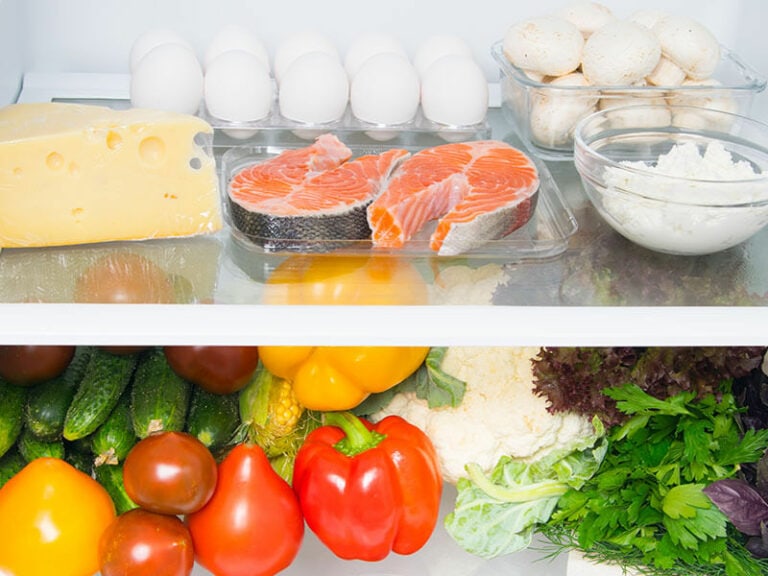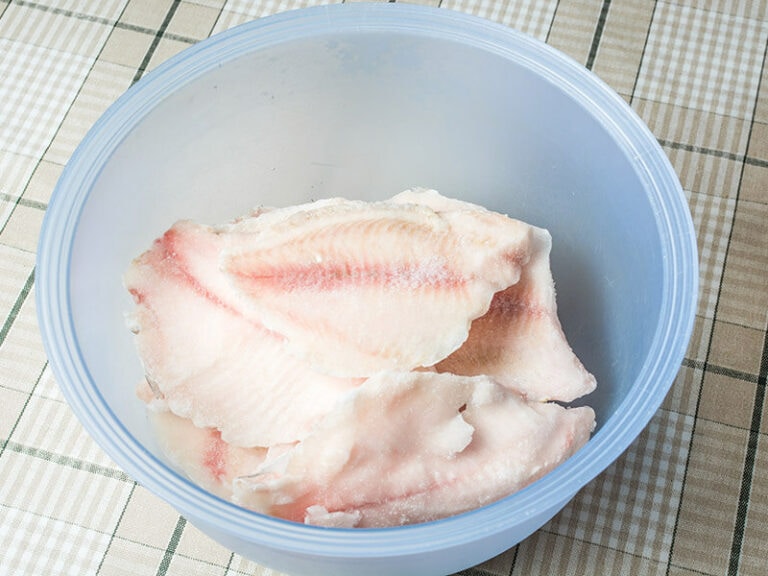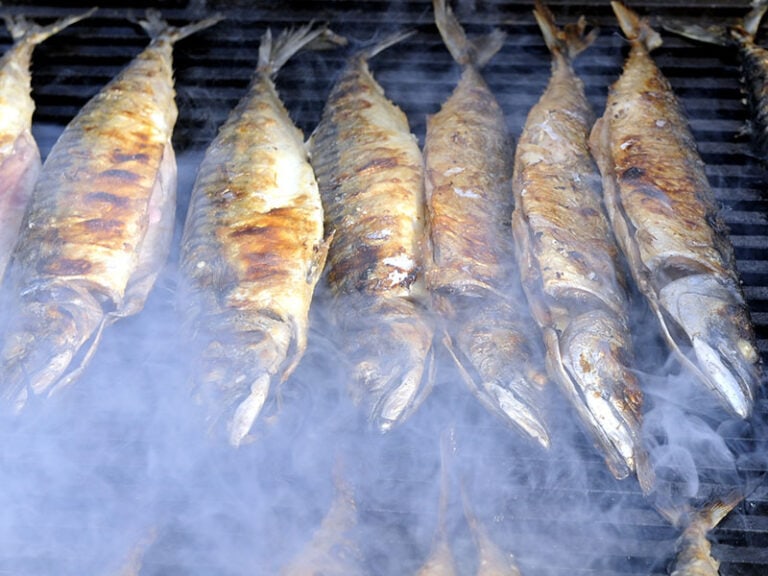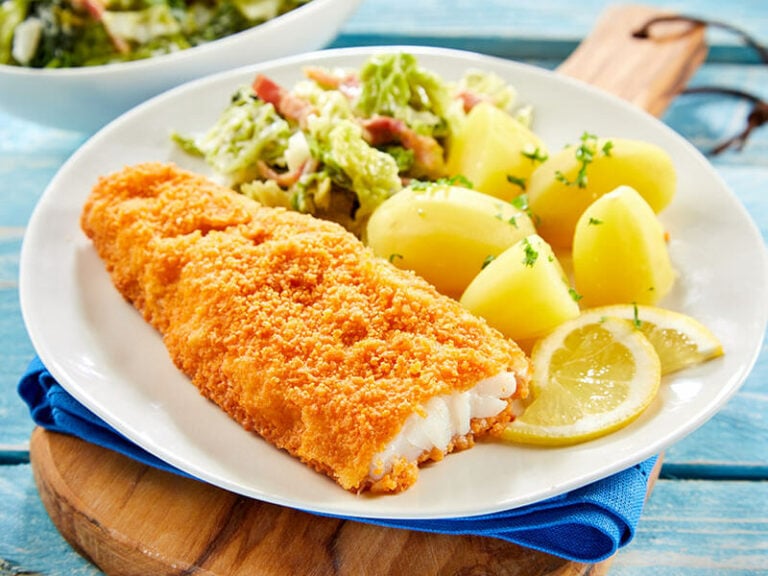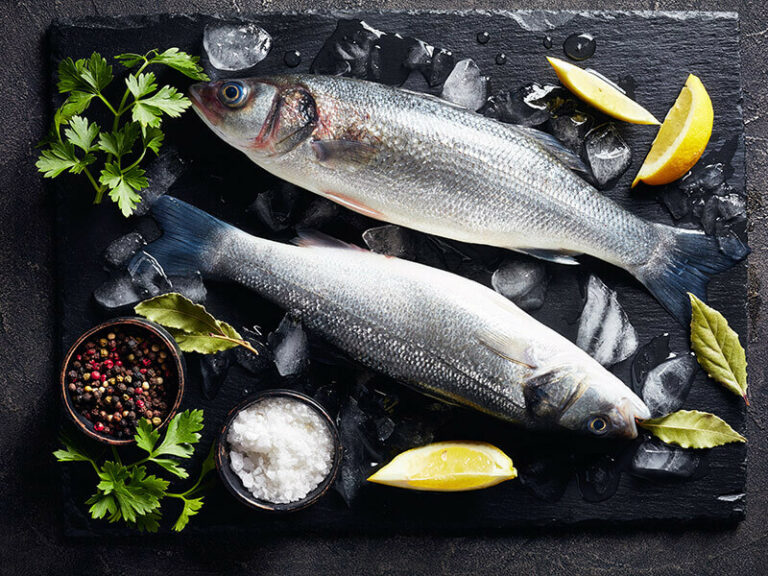Are you wondering how to tell if fish is cooked or not? This can be a problem for those like you who are not used to handling fish. There are lots of ways to handle fish, and you may need to familiarize yourself with them to know how to cook the fish like a pro.
Fish, as an ingredient, is extremely versatile. It can be baked, pan-fried, poached, deep-fried, grilled, etc. The time it takes for fish to cook through can be different depending on how you are cooking it.
With that in mind, let us begin to learn the signs of cooked fish and the different methods you can use to look for those indications. This knowledge is widely applicable so that you can use it on many types of fish and cooking methods.
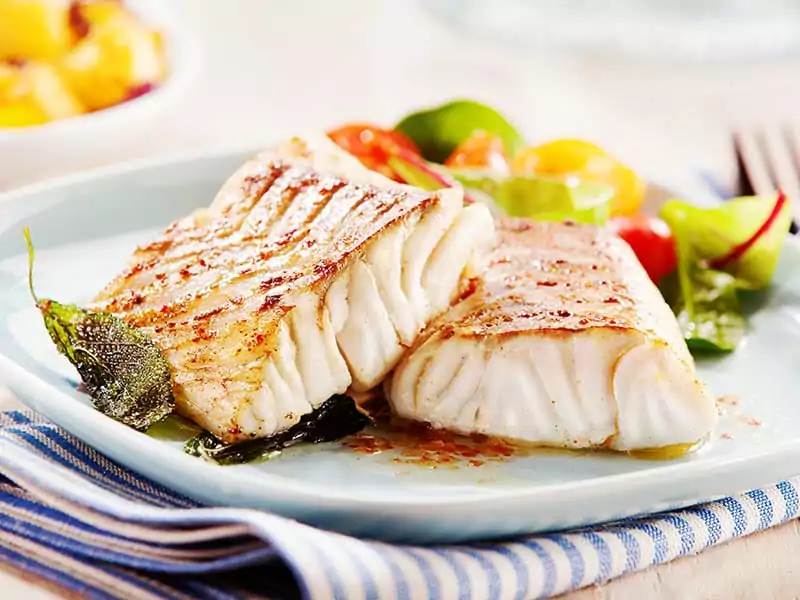
The Indications Of Cooked Fish
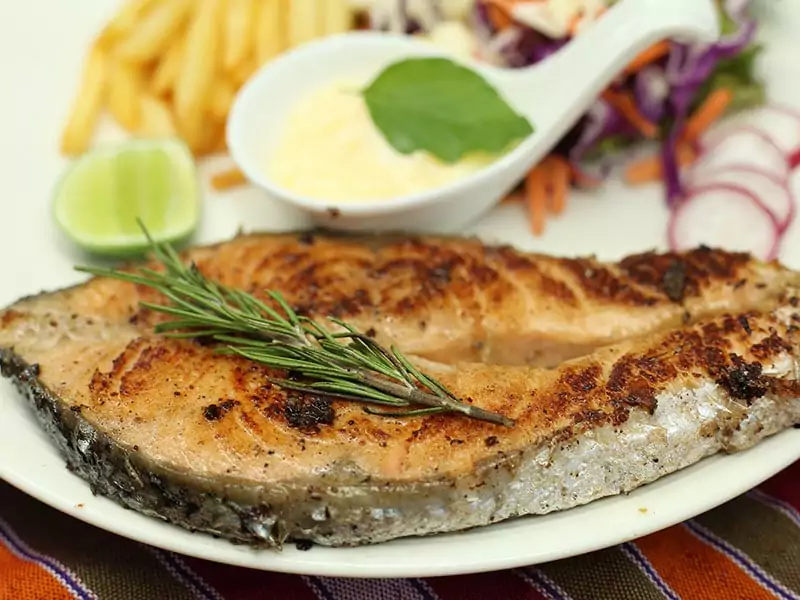
When you cook fish with no prior experience, you are bound to either undercook the fish or overcook it. Even if you know the best ways to smoke fish, if you don’t know the signs of cooked fish, the chances are that the dish might not be done correctly.
It’s important to ensure that the fish is cooked properly because under-cooked fish is a house for bacteria that cause botulism, a fatal disease (1). With that said, I will now provide you with some information that you can look for in fish to check their doneness when they’re still cooking.
Look At The Color Of The Fish
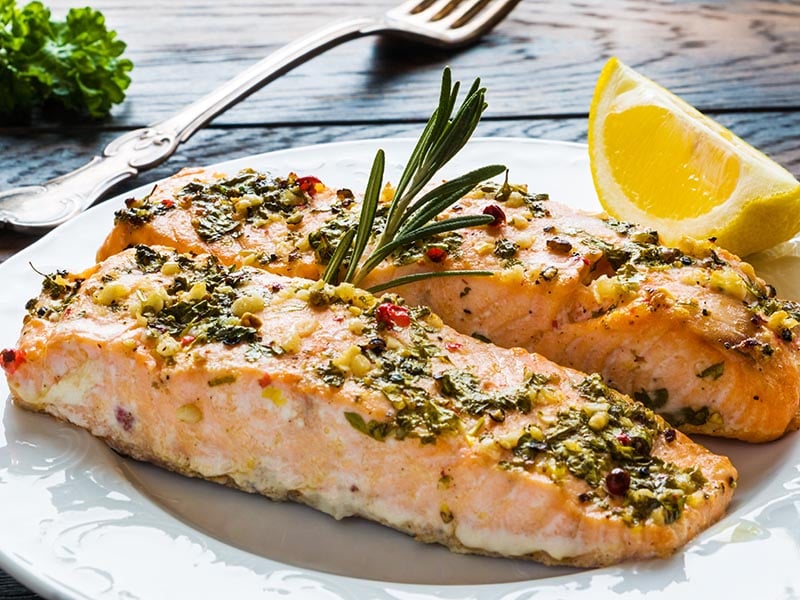
Cooked fish is opaque, while raw fish is translucent. This is why many can’t tell if smoked salmon can be deemed as cooked. If part of the fish is still visibly translucent, it needs more time. However, you should not leave the center to be fully opaque, or the fish will overcook.
There is a difference in color between lean fish and fatty fish. Thin cuts of raw lean fish can be see-through, so you can use this method to check its color. However, it can be pretty hard for thick cuts because the color does not change much for cooked lean fish.
Lean fish like cod and mackerel can be pretty hard to check because they don’t have as much color as fatty fish like tuna and salmon. If you can’t see whether they are cooked through their color, use the flake check method.
It is easier to use this method to check the state of fatty fish. Because they’re deeper in color, their changes are visible to the eyes.
As long as the fish is opaque on the outside and still a little translucent at the center, it is safe to take it out of the pan. This is the perfect moment to take the fish out because it will continue to cook by itself for a while after you take it off the heat.
Check If The Meat Is Flaky
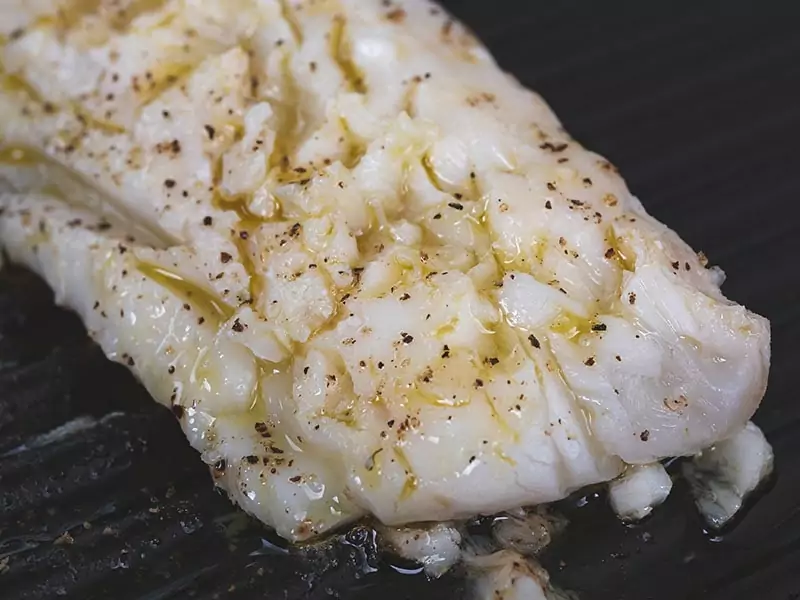
Cooked fish flakes easily. Take a fork and insert it slowly into the fish. As you push the fork, twist it gently at a 45-degree angle. The fish should flake easily because the connective tissues are broken down by the cooking.
You can also use your finger. Fish loses moisture during cooking, so they become tighter, which translates to firmer flesh. It should separate easily under the pressure of your finger.
Use A Meat Thermometer
A wireless meat thermometer with guaranteed utmost accuracy is the most accurate way to judge the doneness of the fish. According to the FDA guidelines, if the internal temperature of the fish reaches 145 degrees F, it’s cooked and safe for consumption.
A meat thermometer is the easiest tool you can use to check the fish’s temperature. If you don’t have a thermometer, consider buying one the next time you cook. It is a cheap and reliable tool to use when you’re not sure about the doneness of your food.
If you don’t know how to use a meat thermometer, check this clip out.
Use A Metal Tool
A cake tester is a small metal rod used mainly in baking. To use it for fish, gently slide the tester into the thickest part of the fish, then place its tip against the back of your hand or below your bottom lip. If it feels hot, then the fish is done cooking.

When you cook dressed fish or whole fish, you can also check its doneness by using the sharpest integrant of the knife – the tip, to gently pry inside of the fish without breaking it. When you’re done checking, just remove the knife, and the fish will look as good as new.
If you don’t have a cake tester, you can use any small metal tool like a skewer, as well. The process is the same as you would do with a tester.
Note: In cases where these methods are not applicable, like when the fish is doused in sauces in the oven, you can use the “10 minutes per inch” rule. This rule says that for every inch of thickness, you should cook the fish for 8 to 10 more minutes.
Here is the visual guide of what to do with a skewer to check for fish doneness.
Things To Look Out For Before You Cook Fish
Before you cook your fish, it’s necessary to keep the fish in its best conditions. This means that the fish should be as fresh as the time you get it, either from a catch or from the local fish market.
Also, you should grab the right amount of fish for one person to ensure you’re always cooking fresh fish. Buying too much fish in one go might mean that you’ll have to store it for later, so the next time you make fish-based dishes, you’ll need to use this not-as-fresh leftover.
Choose Fresh Fish
If you’re buying fish at the store, chances are you’re either buying fresh catch from the morning or frozen cuts in the freezer. If you want to cook the best meal, you need to know how to identify fish spoilage signs as well as how to choose the freshest fish you can find in the store
- For cut portions like filets and steaks, you should look at the meat. Fresh cuts should look clean all the way through, with no discolorations, bruised areas, or blood spots.
- For whole fish, look at their eyes, gills, and scales. Their eyes should be clear and full, while their gills need to be red and not covered in slime. The scales should still be attached strongly to the fish, which reflects the quality of their meat.
- For frozen fish, choose fish with clean and air-tight packaging. Give a glance over the best before-date label to make sure the fish you intend to buy is still of good quality.
Here is a 101 guide that can help you choose the best fish at the store.
Freeze The Fish
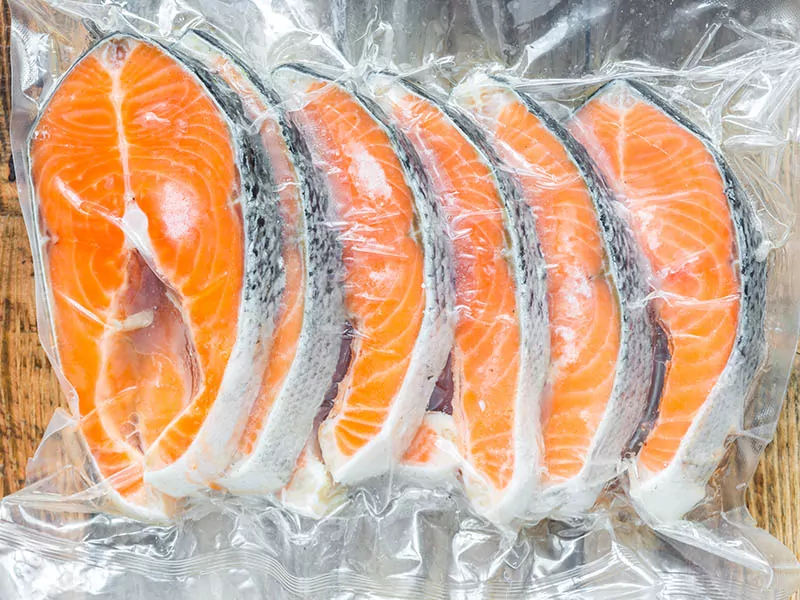
Fish should be frozen if you don’t intend to eat it right away. If you buy the fish from the store and they come pre-frozen, then you should keep it cold all the way to your freezer. The next time you intend to cook it, just swap it to the fridge the night before.
If it’s fresh fish, you should follow some steps to package the fish and freeze it correctly.
- First, you should clean the fish by rinsing it over cold water. Remember not to use warm water. Then, pat it dry with paper towels before you place it in a Ziploc or freezer bag to keep it airtight.
- You should label each bag to know which day you freeze it and then put all of them into the freezer. Frozen fish can last for 2 weeks before it starts to lose quality.
Keep The Fish Refrigerated
If you intend to eat the fish within 1 to 2 days, you can keep it in the fridge. You can defrost frozen fish this way too. It is much safer than leaving it out at room temperature.
The best technique to defrost frozen fish is placing it inside the fridge at the lowest area to thaw slowly overnight. You can just leave it inside its original package. Place the whole thing in a bowl if you think there may be risks of dripping.
For fresh fish, things may be a little bit more complicated. Here is a step-by-step guide for you to follow easier:
Step 1: Clean The Fish
First, you need to rinse each cut over cold water. Make sure there are no spots of blood and foreign elements on the fish. Then you should pat each portion dry with paper towels.
Step 2: Place Them Into Containers
Next, you need to put them separately into an air-tight container. Add a layer of ice beneath the fish, separated by a thin sheet of plastic. Squeeze as much air out as possible so the fish can stay fresh for longer.
Step 3: Store Them In The Fridge
When it comes to the ultimate place in the fridge to store raw fish, I’d say that you need to place each container into the bottom-most area of the fridge, below everything else. This is to prevent cross-contamination, which can cause food poisoning. (2)
Fresh fish can be refrigerated for 1 to 2 days before losing their freshness. You should take them out as late as you can to prevent the fish from coming into contact with other foods and keep their temperature as cool as possible.
Here is an easy guide you can follow to know how to store fish in the fridge.
Some Tips To Cook Your Fish Like A Pro
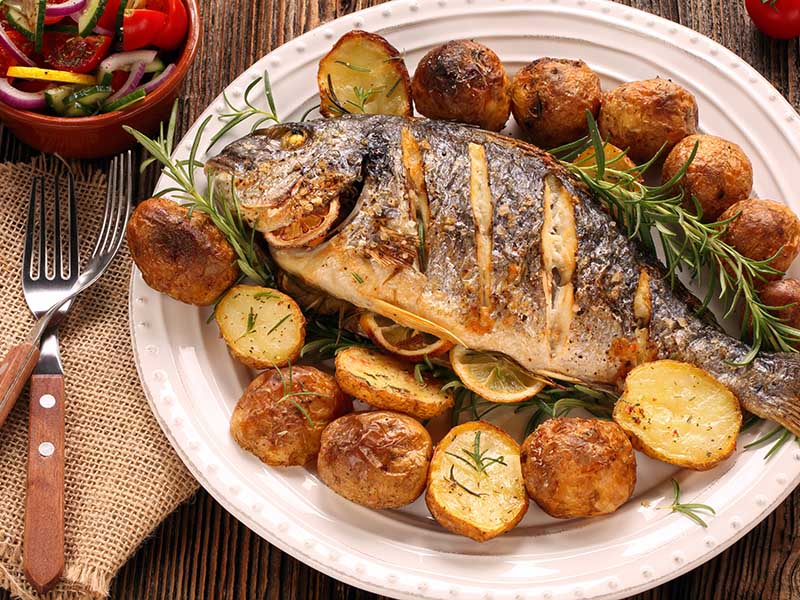
Now that you know what cooked fish look like and how they should feel, it’s time to note down some tips that I have acquired through trials and errors while handling fish. These tricks should help you to handle fish more confidently and avoid unnecessary mistakes in the kitchen.
- If your fish is hard, it is overcooked. You can check the resistance of the meat with a toothpick or a metal skewer. When inserted, they should slide right through the fish and come out easily.
- When you see that the fish is undercooked and intend to cook it for longer, check again after every 1 minute. Fish cooks fast, so they require a lot of attention. You do not want your fish to change from being undercooked to overcooked.
- When the fish is just done cooking, it should still retain a lot of moisture inside. If you leave it cooking until it’s dry, the fish will be overcooked and not taste as good.
- Always cook both sides of the fish. Cooking only one side will lead to an uneven and unappetizing dish. Part of it will burn before the whole fish finishes cooking.
- When you cook fish with their skins still intact, it’s important to cook it skin down first for it to become crispy. When the skin crisps up beautifully, it is a good signal that the fish has finished cooking.
- When fish is done cooking, they can become quite delicate and flaky. You should handle the fish gently with a spatula to avoid breaking the fish apart.
- If you want to keep the fish look presentable, use a cake tester instead of a meat thermometer. It is smaller, so it doesn’t leave as much trace. This is especially useful to use against rather flaky white fish such as flounder and trout.
FAQs
I’m sure by now you have learned how to tell if fish is cooked. There may still be some specific details that you are not sure about throughout the cooking process. Don’t worry, as I am going to compile several questions and their answers for you to glance through.
Good Fish Is Not That Far Off
Those were all the signs that you can look for to know when fish is cooked. Fish is a delicate ingredient, so it may take some effort for you to actually be good at handling it. However, it is only a matter of time before you can do it properly.
You don’t need to go to a restaurant to get good fish. Follow this guide, and I’m sure you can make fish as good as any experts out there. Your family and friends will definitely give you a big thumbs up for your hard work.
If you find this article on cooked fish informative, consider sharing your thoughts and other ideas down in the comment section. I would love to see how you apply these tips and tricks to your cooking. For now, though, I wish you a good day cooking.

References
- Fao.org. 2022. TORRY ADVISORY NOTE No. 22 (Revised) Botulism and fishery products.
- SEAFOOD HEALTH FACTS. 2022. Seafood Safety Overview.

